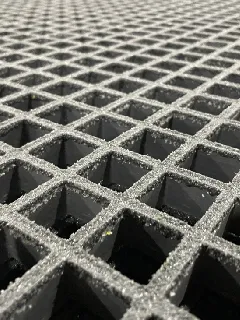loading...
- No. 9, Xingyuan South Street, Dongwaihuan Road, Zaoqiang County, Hengshui, Hebei, China
- admin@zjcomposites.com
- +86 15097380338
- Welcome to visit our website!
Effective Techniques for Treating Well Water Contaminants in Rural Areas
Well Water Treatment Ensuring Safe and Clean Water for Households
Access to clean and safe drinking water is essential for health and well-being, and for many households in rural areas or small communities, well water is the primary source of water supply. However, well water can be contaminated by various pollutants, including bacteria, chemicals, and heavy metals, making it crucial to implement proper water treatment methods. In this article, we will explore the importance of well water treatment, common contaminants, and the methods available to ensure safe drinking water.
The Importance of Well Water Treatment
Well water treatment is vital for several reasons. First and foremost, untreated well water can pose serious health risks. Contaminants such as bacteria, nitrates, and heavy metals can lead to waterborne diseases, neurological disorders, and long-term health issues. For instance, high levels of nitrates, often from agricultural runoff, can be particularly harmful to infants, leading to potentially life-threatening conditions such as methemoglobinemia or blue baby syndrome.
Moreover, well water is subject to seasonal changes, where factors like heavy rainfall can introduce new contaminants. This variability makes regular testing and treatment even more critical.
Finally, ensuring safe drinking water is not just a health concern; it also affects the quality of life. Clear, clean, and safe water enhances household activities such as cooking, cleaning, and bathing, and provides peace of mind to families.
Common Contaminants Found in Well Water
Several types of contaminants can affect well water quality
1. Microbial Contaminants Bacteria (e.g., E. coli, coliform), viruses, and parasites are among the most common microbial contaminants. They can enter wells through animal waste, septic systems, and surface water runoff.
2. Chemical Contaminants These include pesticides, herbicides, and other agricultural chemicals, which can seep into the groundwater. Heavy metals like lead, arsenic, and mercury, often from industrial activities, also fall under this category.
3. Nitrates High levels of nitrates are typically linked to fertilizers and can pose significant health risks, particularly for pregnant women and infants.
well water treatment

4. pH Levels Water with high or low pH levels can indicate corrosive characteristics, leading to the leaching of metals from plumbing and affecting the taste and quality of the water.
Methods of Well Water Treatment
To ensure that well water is safe for consumption, various treatment methods can be employed
1. Filtration A simple way to handle sediment and particulate contaminants is through filtration systems, which can trap physical debris and larger microorganisms.
2. Chlorination This method involves adding chlorine to the water to kill bacteria and viruses. It is widely used due to its effectiveness and relatively low cost. However, it can produce harmful byproducts, so it should be monitored carefully.
3. Reverse Osmosis This advanced method uses a semipermeable membrane to remove a wide range of contaminants, including heavy metals, nitrates, and certain chemical pollutants. While highly effective, it can be more expensive and requires regular maintenance.
4. Ultraviolet (UV) Disinfection UV treatment is a chemical-free way to kill bacteria, viruses, and other pathogens using ultraviolet light. This method is gaining popularity due to its efficacy and lack of chemical residues.
5. Water Softening If hard water is an issue (commonly caused by high levels of calcium and magnesium), water softening systems can be installed to improve water quality.
Conclusion
Proper well water treatment is essential for safeguarding health and ensuring access to clean drinking water. Understanding the potential contaminants and employing suitable treatment methods can significantly mitigate health risks associated with well water. Regular testing and maintenance of water treatment systems are crucial steps in preserving the quality of well water and protecting the health of families relying on it. As communities continue to rely on well water, raising awareness around this issue and promoting effective treatment methods will be fundamental in enhancing public health and safety.
-
Transform Your Spaces with FRP Grating SolutionsNewsNov.04,2024
-
The Versatility and Strength of FRP RodsNewsNov.04,2024
-
The Excellence of Fiberglass Water TanksNewsNov.04,2024
-
The Benefits of FRP Grating for Your ProjectsNewsNov.04,2024
-
Elevate Your Efficiency with FRP Pressure VesselsNewsNov.04,2024
-
Welcome to the World of FRP Pressure VesselsNewsOct.12,2024
-
Unveiling the Future of Filtration: Why FRP Filter Vessels are a Game ChangerNewsOct.12,2024
